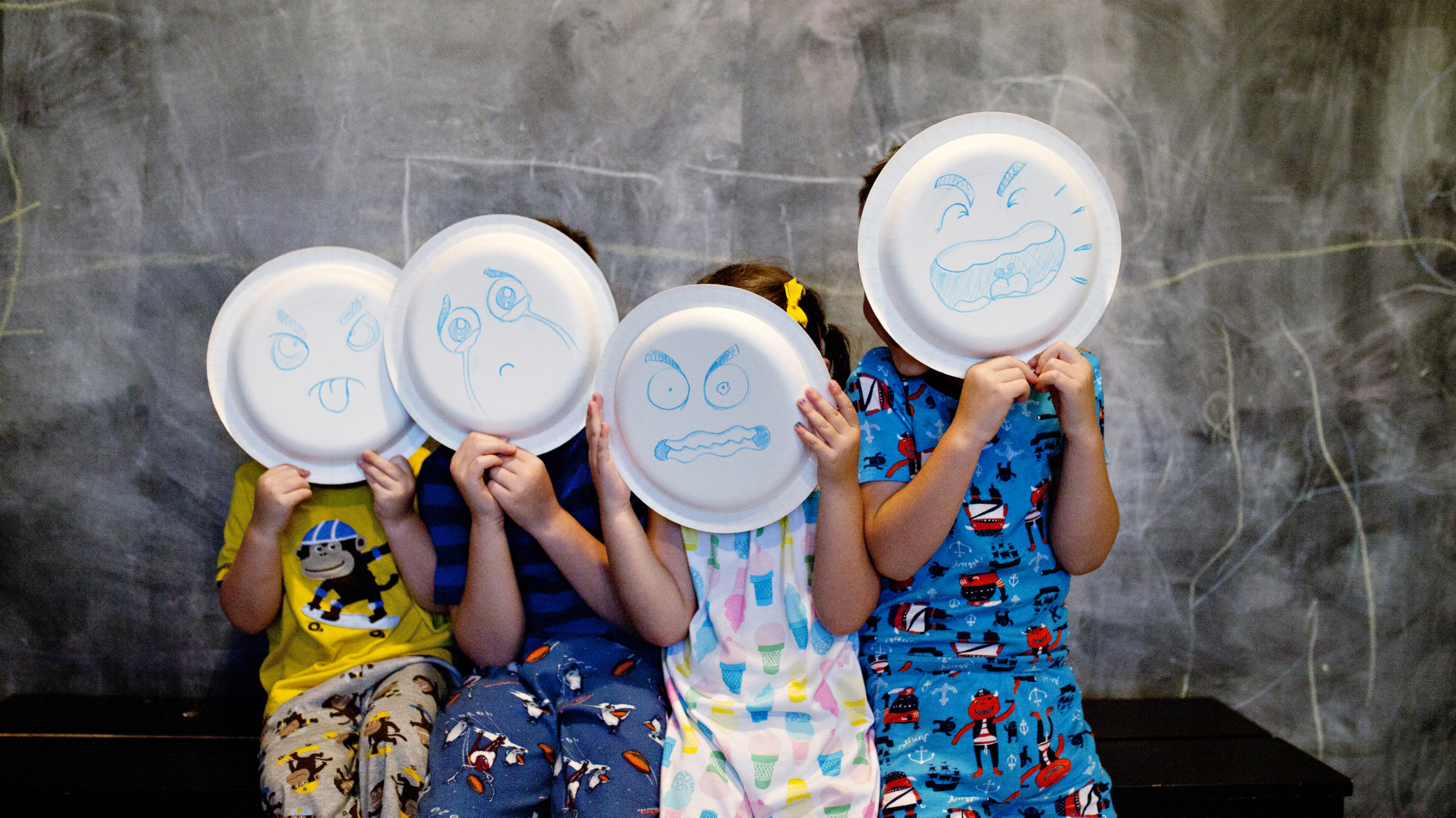
In this article, we will talk about how we can talk to children about emotions so that their self-awareness, social awareness, self-management, and relationship skills can best develop. We will also talk about why it is important for children to recognize and understand their emotions.
It is important to teach children to talk about their feelings, to develop their emotional vocabulary. A preschool educator or a parent should be able to teach children how to express their feelings with words and how to be aware of their physical feelings.
Why is it important for children to recognize their emotions?
Being able to talk about emotions is another important part of emotional intelligence in children. Children need to better understand all their emotions, develop their vocabulary and be able to describe their emotions.

Emotional intelligence is our ability to understand our own and others’ emotions. We start building this type of intelligence in children from the moment they are born. Let’s say a plate fell on the floor while you were cooking in the kitchen and it broke. When a loud noise frightens your baby, the first thing we do is think, “My baby is really scared of loud noises”.
The best we can do in this situation is to help soothe the baby. You know that babies do not know how to calm themselves. Such things are learned as they grow up, some babies suck their thumbs to calm themselves down. The first thing a parent who dropped a plate would do is go to their child, talk in a relaxing voice, and hold the baby in her arms: “You’re scared, aren’t you, my baby, it’s too loud, isn’t it?” After all, as parents, we talk to our babies all the time, even if they don’t understand us. In other words, we actually start teaching emotions from the moment they are born. This is very important for child development. We actually help a lot as they grow and learn about emotions. In the previous example, “You were very scared, weren’t you?” we add the word “scared” to their vocabulary. The purpose of giving children emotional vocabulary is to ask them to tell us how they feel. As they learn this, they also begin to grasp how others feel or might feel.
“Emotional intelligence” is a very broad concept and it is one of the life skills we must teach as we raise our children. This feature also greatly affects the child’s personality development and becomes a part of the child’s identity. One of the traits that develop with emotional intelligence is self-awareness. Self-awareness is knowing our own feelings, having confidence, knowing who we are, and being motivated by them. These are probably things all parents want for their kids.
Social awareness is being socially aware, empathizing with others. If we ourselves can understand how we feel, only then we can understand the sadness or happiness of another. We can read the cues on people’s faces and understand that maybe they want something from us.
The third feature is self-management. Understanding and recognizing our own emotions and those of other people takes time. Some adults are still putting effort into this important event. Self-management means controlling our emotions, being able to regulate them. A self-directed person should be able to ask these questions when faced with big and strong emotions: “What am I doing in the face of this emotion? Am I trying to get over it? How can I adapt?”
The fourth ability is relationship skills. It means having the ability to truly connect with others, be able to lead, participate in teamwork, and collaborate. These are the things adults need to survive. The sooner we teach these skills to children; we can prepare them for life in understanding their own feelings, developing their social awareness, shaping their relationship skills and other abilities.
All of these are part of emotional intelligence. Emotional intelligence training is a huge duty for educators and parents. That’s why it’s really important, as parents and educators, that we start training in emotional intelligence development from a very young age.
How to talk to kids about feelings? How are emotions taught?
The first method that can be used when teaching children about emotions can be to get help from toys. By using toys of different colors, emotions can be attributed to toys. For example, a blue toy can be chosen for a sense of calmness. Feelings in various parts of the body can also be taught to children using dolls. The doll’s facial expression will be an important clue for children. You can also talk about the feelings felt around the baby’s head, heart and stomach by touching them.
Instead of teaching children only emotional words, we should also teach them about the changes and feelings in their bodies. How do different emotions feel in their minds? How does her tummy feel when they’re worried? By talking about these issues, we can teach them the signals that different emotions create in their bodies. It will be useful to show the parts such as the abdomen, head, and heart on dolls and try to communicate with children about their feelings. Dolls are perfect for this because every child has a doll and they can bring it to you and say, “Look, I’m hurting here.”
How to help children with “big” feelings?

Another scenario is big feelings, this may be a little more complex and a little deeper. Children may experience great emotions, for example, a child experiencing anxiety or stress. Parents and preschool educators should coach and work with children who experience these great emotions to help them.
It is inevitable that our children will experience great emotions, and they can manifest as behaviors we dislike. But what we need to remember about this is that our children are still learning how to express themselves. Therefore, it is possible that sometimes they express themselves in ways that may not be good in order to understand what is good.
We know it’s hard, but keeping your own calm is the most important tool you’ll need when your child isn’t calm. You must do your best to maintain your calmness and patience. This should not be forgotten when approaching a child who is feeling anxious, sad, or angry. Try to approach these types of situations the way you would want someone to approach you. This can be really hard sometimes because we’re human too and we can’t always stay calm.
The next step is to simply listen. If your child is communicating with you verbally, listen. You don’t have to agree or disagree with what he’s saying, but make him feel like you’re listening. Use expressions such as “I think you are upset right now”, “I can see that you are really worried right now”, “I know you are worried and I understand you”. This way, you can show your child that you understand what he or she is feeling.
If your child behaves undesirably when they have “big” feelings, maybe it’s because they don’t know how to say what they’re feeling. Ask them, “What you’re feeling right now is anxiety, okay?” You can teach him this feeling with words.
The next step may be to teach tips to help them control their emotions. When our children are young, they need an adult, perhaps even an older sibling, who can help them regulate their emotions. For this reason, parents and educators should find a solution and teach them when children are not having great feelings. Among these, there may be clues such as using their breathing correctly, using ways to calm down and turning to the things they enjoy.
Another suggestion is to leave the child alone. If the above suggestions don’t work, step aside and let him do what he wants. Maybe he’ll go get a toy and hug it or start breathing deeply. If you help in the right way, eventually your child will learn how to control these emotions. But remember that this can take a long time and many repetitions.
Parents and trainers who want to join the Pre-Education family or want to get detailed information about our services can reach us by filling out the application forms on our website.
